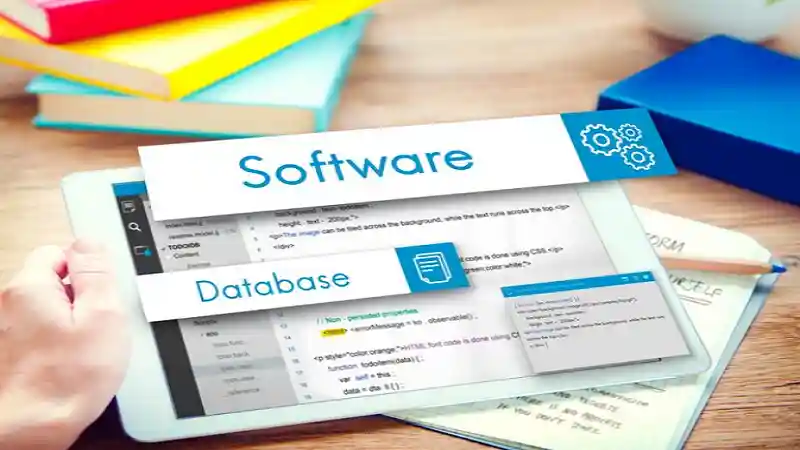In the ever-evolving field of software development, choosing the right programming language is crucial for building robust and efficient applications. As new languages emerge and old ones evolve, developers must stay informed about their strengths and weaknesses to make the best decisions. In this article, we will explore five popular programming languages—PKL, Swift, Go, Java, and Kotlin—and provide practical insights into their uses, features, and how to leverage them in modern development projects.
What is PKL?
Introduction to PKL
PKL (Pickle) is often associated with Python’s built-in serialization module, but it also refers to a specific data format used in Python to save and load objects. However, in the context of programming languages, PKL is not widely recognized as an independent language but rather as a tool for data serialization in Python. Serialization refers to the process of converting an object into a format that can be easily stored or transmitted, and Pickle is one of the most commonly used modules for this purpose.
Despite its importance in Python, PKL isn’t typically used as a standalone language in the way languages like Swift or Java are. Understanding PKL in the broader context of data handling, particularly with Python, is essential when dealing with tasks involving data persistence or transmission between systems.
Practical Use of PKL in Python Development
In Python, PKL files allow developers to store complex data structures, such as lists, dictionaries, or even machine learning models. These files can then be reloaded into memory for later use, making it an excellent tool for improving the efficiency of applications. Here’s a simple example of how to use PKL in Python: Programming Languages
In the example above, a dictionary is saved to a .pkl file and then loaded back into memory. This is a simple demonstration of how PKL is used for object serialization in Python, providing significant benefits in terms of data management.
Swift: A Modern Language for iOS and macOS Development
What Makes Swift Stand Out?
Swift, developed by Apple, is a powerful, high-performance language designed primarily for iOS, macOS, watchOS, and tvOS applications. Swift is known for its clean syntax, performance optimizations, and modern features, making it one of the most popular choices for mobile and desktop development on Apple’s platforms.
Key Features of Swift
- Safety and Performance: Swift was designed with safety in mind, reducing the chances of runtime crashes by eliminating unsafe pointer operations and offering automatic memory management.
- Interoperability: Swift is fully interoperable with Objective-C, allowing developers to integrate it into existing iOS and macOS projects easily.
- Modern Syntax: With its concise and readable syntax, Swift makes it easier for developers to write and maintain code.
- Playgrounds: Swift includes an interactive environment called Playgrounds that allows developers to write code and see results instantly.
Practical Steps for Getting Started with Swift
To start building iOS apps with Swift, follow these practical steps:
- Install Xcode: Xcode is Apple’s integrated development environment (IDE) for macOS. Download and install it from the Mac App Store.
- Learn Swift Syntax: Begin by understanding basic Swift syntax, such as variables, constants, and control flow.
- Build Your First App: Use Xcode’s user-friendly tools to create simple apps and explore the iOS SDK (Software Development Kit) for deeper functionality.
- Use Swift Playgrounds: Swift Playgrounds allows you to experiment with code and visualize results in real-time, making it an excellent tool for learning.
By mastering Swift, developers can create highly responsive and efficient applications for Apple’s ecosystem.
Go: The Go-To Language for Scalable Systems
What is Go?
Go, also known as Golang, was developed by Google to address the challenges of scalable and concurrent systems. Known for its simplicity and fast execution speed, Go is ideal for cloud computing, microservices, and distributed systems.
Why Choose Go?
- Concurrency Model: Go’s goroutines and channels provide a simple yet powerful way to handle concurrent tasks, making it perfect for building high-performance systems.
- Simplicity: Go’s minimalistic syntax allows developers to write clear and readable code quickly, without unnecessary complexity.
- Fast Compilation: Go compiles to native code, resulting in fast execution times and reduced startup overhead.
Practical Steps for Working with Go
To get started with Go, follow these steps:
- Install Go: Download the Go programming language from the official website and follow the installation instructions.
- Write Your First Go Program: Begin by writing a simple “Hello, World!” program to familiarize yourself with Go’s syntax.
- Learn Go Concurrency: One of the most powerful features of Go is its concurrency model. Learn about goroutines and channels to handle multiple tasks simultaneously.
- Explore Go’s Standard Library: Go comes with a comprehensive standard library for tasks such as file handling, HTTP servers, and more.
By learning Go, developers can build highly scalable, performant systems suitable for modern cloud-based applications.
Java: The Backbone of Enterprise Software
Why Java is Still Relevant
Java is one of the most established and widely used programming languages, especially in enterprise environments. Its platform independence, object-oriented nature, and extensive ecosystem make it an excellent choice for large-scale applications.
Key Features of Java
- Cross-Platform Compatibility: Java’s Write Once, Run Anywhere (WORA) principle allows programs to run on any platform that has a Java Virtual Machine (JVM).
- Robust Ecosystem: With a vast collection of libraries, frameworks (like Spring and Hibernate), and tools, Java remains a dominant force in backend development.
- Scalability: Java’s performance optimizations and strong memory management make it a great choice for building large, enterprise-level applications.
Getting Started with Java
To begin developing in Java:
- Install the JDK: Download the Java Development Kit (JDK) from Oracle or adopt OpenJDK for open-source development.
- Learn the Basics: Understand Java’s object-oriented programming principles, such as classes, objects, inheritance, and polymorphism.
- Build a Simple Application: Create a simple console-based application to understand Java syntax and features.
- Learn Java Frameworks: Explore frameworks like Spring or Jakarta EE for building enterprise-grade applications.
Java continues to be a powerhouse for backend development, web applications, and Android mobile applications.
Kotlin: The Future of Android Development
Kotlin’s Rise in Popularity
Kotlin is a statically-typed programming language developed by JetBrains. It is fully interoperable with Java and is now the preferred language for Android development due to its modern features and concise syntax.
Key Features of Kotlin
- Concise Syntax: Kotlin’s syntax is more concise compared to Java, reducing boilerplate code and enhancing readability.
- Null Safety: Kotlin includes null safety features, reducing the chances of null pointer exceptions, a common issue in Java development.
- Coroutines for Concurrency: Kotlin introduces coroutines, making asynchronous programming much simpler and more efficient.
Practical Steps to Start with Kotlin
- Install IntelliJ IDEA or Android Studio: Both IDEs support Kotlin, with Android Studio being the best choice for Android development.
- Familiarize Yourself with Kotlin Syntax: Learn Kotlin’s basic syntax, such as data classes, extension functions, and lambdas.
- Build an Android App: Create a simple Android app to get hands-on experience with Kotlin in the mobile development world.
- Explore Kotlin Coroutines: Dive into Kotlin’s coroutines for managing asynchronous programming and handling multiple tasks.
By mastering Kotlin, developers can build modern Android apps with less code and fewer bugs, taking advantage of Kotlin’s null safety and performance benefits.
Conclusion
In conclusion, the world of programming languages is vast and diverse, with each language offering unique advantages. PKL (Pickle), Swift, Go, Java, and Kotlin all serve different purposes and are suited for various development needs.
- PKL is valuable in Python for data serialization.
- Swift excels in building native applications for Apple’s ecosystem.
- Go is ideal for scalable, concurrent systems in cloud computing.
- Java continues to dominate in large-scale enterprise software and backend development.
- Kotlin is the modern language of choice for Android development.
By understanding the strengths of each language and following the practical steps outlined in this article, developers can make informed decisions that align with their project requirements. Whether you’re building mobile apps, enterprise systems, or cloud-native applications, there is a language tailored to your needs.





